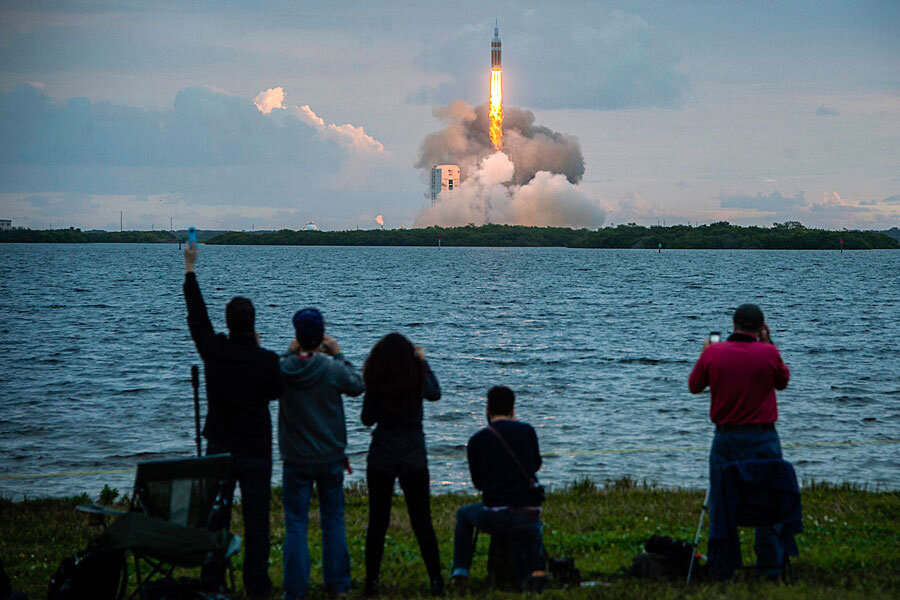With eye on Mars, NASA to launch biggest rocket since Saturn V
Loading...
For the first time in nearly half a century, NASA announced the premiere flight of its new heavy lift launch vehicle, the Space Launch System, to take place in 2018.
The megarocket will carry Orion, the spacecraft slated to make the manned journey to Mars, in addition to 13 CubeSats, or miniature satellites, to conduct various experiments in the lunar orbit and beyond. The last time NASA employed a super heavy lift launch capsule was in 1973, when Saturn V finally retired.
As the first segment of the flight, Orion will be launched into a stable orbit beyond the moon in order to test the abilities of the spacecraft and the SLS rocket as an integrated system before supporting a full, human crew in a mission to the Red Planet in as soon as 15 years.
“The SLS is providing an incredible opportunity to conduct science missions and test key technologies beyond low-Earth orbit," Bill Hill, deputy associate administrator for Exploration Systems Development at NASA, said in a statement.
“This rocket has the unprecedented power to send Orion to deep space plus room to carry 13 small satellites – payloads that will advance our knowledge about deep space with minimal cost.”
Typically, CubeSats are launched into the low-Earth orbit, so this upcoming flight, known as Exploration Mission-1 (EM-1), will provide scientists the rare opportunity to experiment in deep space.
Four of the CubeSat payloads will focus on the lunar surface, in search for ice deposits, hydrogen, and other resources. The Near-Earth Asteroid Scout CubeSat, a robotic reconnaissance mission selected by NASA’s Human Exploration and Operations Mission Directorate, will surveil an asteroid that may one day be a human destination.
Another CubeSat, the Biosentinel, will test yeast culture to see the effects of deep space radiation on living organisms, and a “space weather station” CubeSat will monitor particles and magnetic fields in space.
Six additional CubeSats have yet to be determined; three will be reserved for international partners and the other three will be chosen from NASA’s Cube Quest Challenge – a competition open to any team of scientists who can design, build, and deliver flight-qualified satellites that could provide benefits to future missions.
“The 13 CubeSats that will fly to deep space as secondary payloads aboard SLS on EM-1 showcase the intersection of science and technology, and advance our journey to Mars,” NASA Deputy Administrator Dava Newman in a statement.
Each CubeSat weighs about 5 pounds and is about 4 inches by 4 inches by 6.7 inches – small enough to fit in your hand.
Meanwhile, Orion has begun its next stage of development. The spacecraft was transported Monday morning from NASA’s Michoud Assembly Facility in New Orleans to the Kennedy Space Center in Cape Canaveral, Fla., in the remarkable Super Guppy aircraft.
In December of 2014, the Orion took its first flight – Exploration Flight Test 1 (EFT-1) – to 3,600 miles above the Earth’s surface, serving as an initial test for the vehicle’s basic functions. It was the first capsule certified to transport humans to travel beyond the low-Earth orbit in more than 40 years.
If everything goes according to plan – including the necessary federal funding – four human astronauts will venture to Mars aboard the Orion by the mid-2030s.








